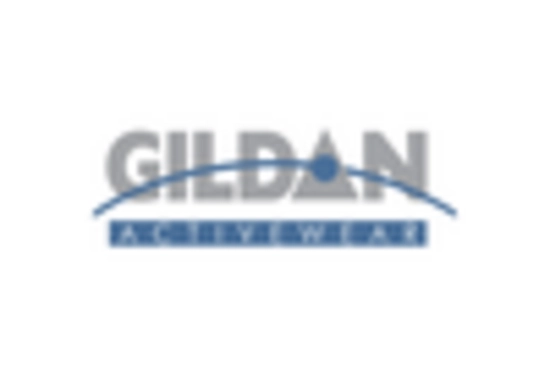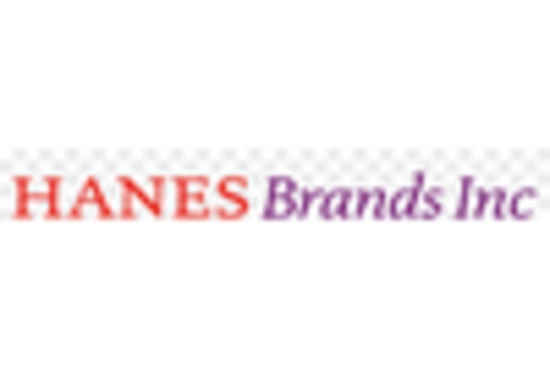E-commerce Growth
The rise of e-commerce platforms has transformed the Hosiery Market, enabling consumers to access a wider variety of products from the comfort of their homes. Online sales channels have become increasingly popular, with a reported increase of over 20% in online hosiery sales in recent years. This shift not only enhances convenience for consumers but also allows brands to reach a broader audience. The Hosiery Market benefits from this trend as retailers invest in digital marketing strategies to attract online shoppers. Furthermore, the integration of augmented reality in online shopping experiences may enhance customer engagement, potentially leading to higher conversion rates. As e-commerce continues to expand, it is likely that the Hosiery Market will see sustained growth driven by this digital transformation.
Technological Innovations
Technological advancements are reshaping the Hosiery Market, leading to the development of innovative products that enhance performance and comfort. The introduction of smart textiles, which can monitor body temperature and moisture levels, is gaining traction among consumers seeking high-performance hosiery. Additionally, advancements in manufacturing techniques, such as 3D knitting, allow for greater customization and fit, catering to individual preferences. Market data suggests that the demand for technologically advanced hosiery is on the rise, with a projected growth rate of approximately 7% annually. As consumers become more tech-savvy, the Hosiery Market is likely to embrace these innovations, creating opportunities for brands to differentiate themselves in a crowded marketplace. This focus on technology may not only enhance product offerings but also attract a younger, more dynamic consumer base.
Health and Wellness Trends
The increasing awareness of health and wellness is influencing consumer preferences within the Hosiery Market. Compression hosiery, designed to improve circulation and reduce fatigue, is gaining traction among consumers seeking both comfort and health benefits. The market for compression hosiery has shown a notable increase, with estimates suggesting a growth rate of approximately 8% annually. This trend reflects a broader shift towards products that promote well-being, aligning with the growing demand for functional yet fashionable hosiery. Additionally, the Hosiery Market is witnessing innovations in materials that enhance breathability and moisture-wicking properties, catering to health-conscious consumers. As the focus on health continues to rise, the Hosiery Market is likely to adapt by offering products that meet these evolving consumer needs.
Sustainability Initiatives
Sustainability has emerged as a pivotal driver within the Hosiery Market, as consumers increasingly seek eco-friendly products. Brands are responding by adopting sustainable practices, such as using recycled materials and reducing waste in production processes. The market for sustainable hosiery is projected to grow significantly, with estimates suggesting a compound annual growth rate of around 10%. This shift not only aligns with consumer values but also positions brands favorably in a competitive landscape. Furthermore, the Hosiery Market is witnessing collaborations between brands and environmental organizations to promote awareness and drive sustainable practices. As sustainability becomes a core value for consumers, the Hosiery Market is likely to evolve, with an increasing number of brands prioritizing eco-conscious initiatives.
Diverse Consumer Preferences
The Hosiery Market is characterized by a diverse range of consumer preferences, driven by factors such as age, gender, and lifestyle. Younger consumers are increasingly drawn to trendy and colorful designs, while older demographics may prioritize comfort and functionality. This segmentation presents opportunities for brands to tailor their offerings to meet specific consumer needs. Market data indicates that the demand for plus-size hosiery has surged, reflecting a growing emphasis on inclusivity in fashion. As brands respond to these diverse preferences, the Hosiery Market is likely to see an expansion in product lines that cater to various body types and style preferences. This adaptability may enhance brand loyalty and attract new customers, ultimately contributing to the overall growth of the Hosiery Market.


















Leave a Comment